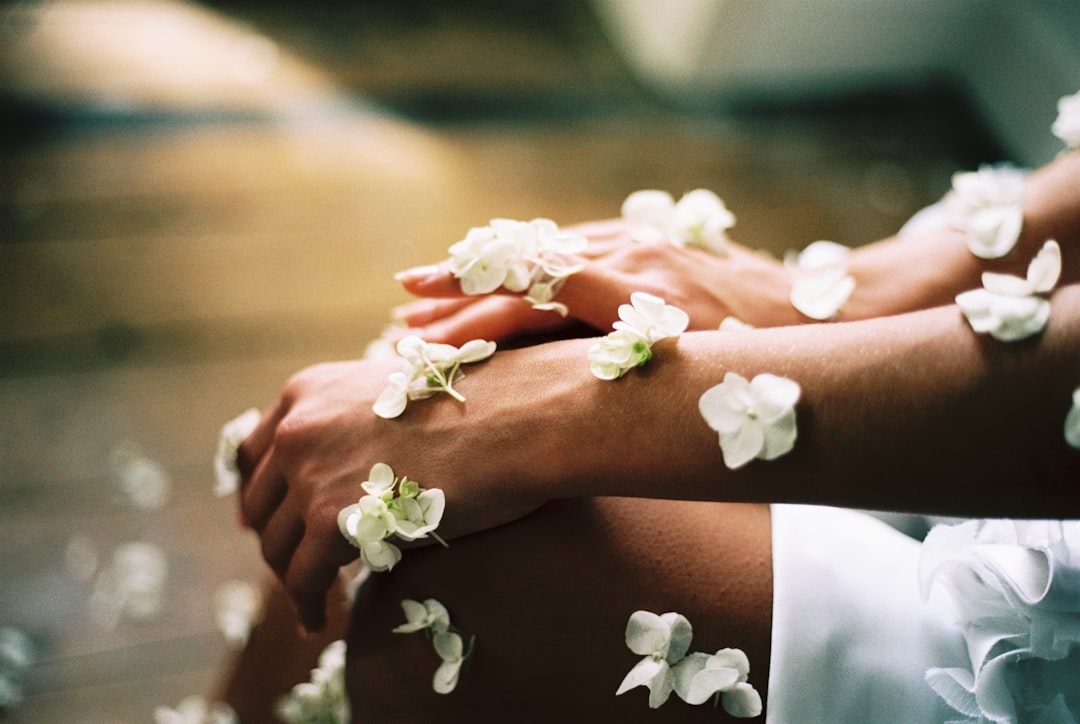DIY skincare, or do-it-yourself skincare, is a growing trend in the beauty and wellness industry. It involves creating your own skincare products using natural ingredients that are easily accessible and affordable. Many people are turning to DIY skincare as a way to take control of what they put on their skin, avoid harmful chemicals, and save money. With the rise of social media and online tutorials, it has become easier than ever to learn how to make your own skincare products at home. From face masks and scrubs to body butters and lotions, there are endless possibilities for creating personalized skincare solutions that cater to your specific skin type and concerns. Whether you’re looking to address acne, dryness, or signs of aging, DIY skincare allows you to tailor your products to meet your individual needs.
Summary
- DIY skincare allows you to create customised products using natural ingredients at home, tailored to your skin’s needs.
- Benefits of DIY skincare include cost-effectiveness, control over ingredients, and the ability to avoid harmful chemicals.
- Essential ingredients for DIY skincare include carrier oils, essential oils, natural exfoliants, and skin-nourishing ingredients like honey and aloe vera.
- DIY skincare recipes for the face can include homemade cleansers, masks, serums, and moisturisers using ingredients like coconut oil, avocado, and green tea.
- DIY skincare recipes for the body can include homemade body scrubs, lotions, and bath soaks using ingredients like sugar, oats, and shea butter.
- Tips for a relaxing spa-like experience at home include creating a calming atmosphere, using aromatherapy, and incorporating massage techniques into your skincare routine.
- Precautions and safety measures for DIY skincare include patch testing new ingredients, using proper sanitation, and being cautious with essential oil dilution to avoid skin irritation.
Benefits of DIY Skincare
There are numerous benefits to incorporating DIY skincare into your beauty routine. Firstly, making your own skincare products gives you complete control over the ingredients you use. This means you can avoid harsh chemicals, synthetic fragrances, and other potentially harmful additives commonly found in commercial skincare products. By using natural and organic ingredients, you can ensure that your skin is receiving the best possible care without exposing it to unnecessary toxins. Additionally, DIY skincare can be a more cost-effective option in the long run. Many store-bought skincare products come with a hefty price tag, but by making your own, you can save money while still achieving great results. Furthermore, creating your own skincare products can be a fun and creative process. Experimenting with different ingredients and formulations allows you to tailor your products to your specific skin concerns and preferences, resulting in a truly personalized skincare experience.
Essential Ingredients for DIY Skincare
When it comes to DIY skincare, there are several essential ingredients that are commonly used in a variety of recipes. These natural ingredients are known for their beneficial properties and can be easily incorporated into homemade skincare products. One popular ingredient is coconut oil, which is praised for its moisturizing and antibacterial properties. It can be used in a wide range of skincare products, from cleansers and moisturizers to hair masks and lip balms. Another staple ingredient is honey, which is a natural humectant that helps to lock in moisture and soothe the skin. It also has antibacterial and anti-inflammatory properties, making it a great addition to face masks and scrubs. Essential oils such as lavender, tea tree, and rosehip are also commonly used in DIY skincare for their therapeutic benefits and pleasant aromas. These oils can be added to facial serums, body oils, and bath products to enhance the overall skincare experience.
DIY Skincare Recipes for Face
There are countless DIY skincare recipes for the face that cater to different skin types and concerns. For those with oily or acne-prone skin, a simple clay mask made with bentonite or kaolin clay can help to draw out impurities and excess oil from the skin. Mixing the clay with water or apple cider vinegar creates a purifying mask that can be used once or twice a week for clearer, smoother skin. For dry or sensitive skin, a gentle oatmeal face scrub can help to exfoliate and nourish the skin without causing irritation. Simply blend oats into a fine powder and mix with honey and a few drops of coconut oil for a soothing and hydrating scrub. Additionally, creating a homemade facial toner using witch hazel, rose water, and a few drops of lavender essential oil can help to balance the skin’s pH levels and provide a refreshing boost of hydration. These are just a few examples of DIY skincare recipes for the face that can easily be made at home with minimal ingredients.
DIY Skincare Recipes for Body
In addition to facial skincare, there are also plenty of DIY recipes for body care that can help to nourish and pamper the skin from head to toe. One popular option is creating a homemade body butter using shea butter, cocoa butter, and coconut oil. This luxurious blend of natural ingredients provides intense moisture and helps to improve the skin’s elasticity, making it perfect for dry or mature skin. Another indulgent treat for the body is a DIY sugar scrub made with brown sugar, almond oil, and a splash of vanilla extract. This gentle exfoliating scrub helps to slough away dead skin cells while leaving the skin soft and smooth. For those looking to soothe tired muscles and relax the mind, a homemade bath soak using Epsom salts, dried lavender, and chamomile essential oil can create a spa-like experience in the comfort of your own home. These DIY skincare recipes for the body offer a luxurious and affordable way to care for your skin from head to toe.
Tips for a Relaxing Spa-like Experience at Home
Creating a spa-like experience at home with DIY skincare can be a wonderful way to relax and unwind after a long day. To set the mood, consider lighting some scented candles or using an essential oil diffuser to fill the room with calming aromas such as lavender or eucalyptus. Playing soft music or nature sounds can also help to create a tranquil atmosphere for your at-home spa experience. Additionally, incorporating self-massage techniques using facial rollers or body oils can help to release tension and promote relaxation. Taking the time to slow down and focus on self-care can have a positive impact on both your physical and mental well-being. Finally, treating yourself to a homemade face mask or body scrub can add an extra touch of luxury to your at-home spa experience, leaving your skin feeling refreshed and rejuvenated.
Precautions and Safety Measures for DIY Skincare
While DIY skincare can be a fun and rewarding experience, it’s important to take certain precautions to ensure the safety and effectiveness of your homemade products. Always do a patch test before using any new DIY skincare product to check for any allergic reactions or sensitivities. Additionally, be mindful of using fresh ingredients and storing homemade products properly to prevent contamination or spoilage. It’s also crucial to research the properties of each ingredient you plan to use in order to understand how they may interact with your skin type or any existing conditions. When using essential oils, be sure to dilute them properly as they are highly concentrated and can cause irritation if used undiluted. Lastly, if you have any concerns about creating or using DIY skincare products, it’s always best to consult with a dermatologist or skincare professional for guidance.
In conclusion, DIY skincare offers a wealth of benefits including control over ingredients, cost-effectiveness, and personalization. By incorporating essential natural ingredients into homemade skincare products, individuals can create tailored solutions for their specific skin concerns. From face masks and scrubs to body butters and bath soaks, there are endless possibilities for creating luxurious at-home spa experiences that promote relaxation and well-being. However, it’s important to take precautions when creating and using DIY skincare products in order to ensure safety and effectiveness. With the right knowledge and care, DIY skincare can be a rewarding journey towards healthier, happier skin.
Indulge in a spa-like experience at home with our collection of DIY skincare recipes. From luxurious face masks to invigorating body scrubs, pamper yourself with natural ingredients for glowing, radiant skin. For those with irritated skin, check out our related article on how to soothe irritated skin for effective remedies and soothing tips. If you’re someone who leads an active lifestyle, discover the latest global skincare trends tailored for active individuals. And if you’re curious about skincare brands, read our insightful brand review of The Ordinary, uncovering a mix of hits and misses in their product range. Elevate your at-home spa experience with these informative reads. How to Soothe Irritated Skin, Global Skincare for Active Lifestyles, Brand Review: The Ordinary
FAQs
What are the benefits of DIY skincare recipes?
DIY skincare recipes allow you to control the ingredients that go into your skincare products, ensuring that they are natural and tailored to your specific skin needs. They can also be cost-effective and provide a spa-like experience at home.
What are some common ingredients used in DIY skincare recipes?
Common ingredients used in DIY skincare recipes include natural oils (such as coconut oil, jojoba oil, and almond oil), essential oils (such as lavender, tea tree, and rosemary), honey, aloe vera, oatmeal, and various fruits and vegetables.
Are DIY skincare recipes suitable for all skin types?
DIY skincare recipes can be tailored to suit different skin types, including oily, dry, sensitive, and combination skin. It’s important to research and choose ingredients that are suitable for your specific skin type and concerns.
Are there any risks associated with using DIY skincare recipes?
While DIY skincare recipes can be beneficial, there are potential risks associated with using certain ingredients, such as allergic reactions or skin irritation. It’s important to patch test new ingredients and recipes and to research their potential side effects.
Can DIY skincare recipes replace professional skincare treatments?
DIY skincare recipes can complement professional skincare treatments, but they may not be able to fully replace them. Professional treatments often use advanced technology and ingredients that may not be easily replicated at home. It’s important to consult with a skincare professional for specific skin concerns.




